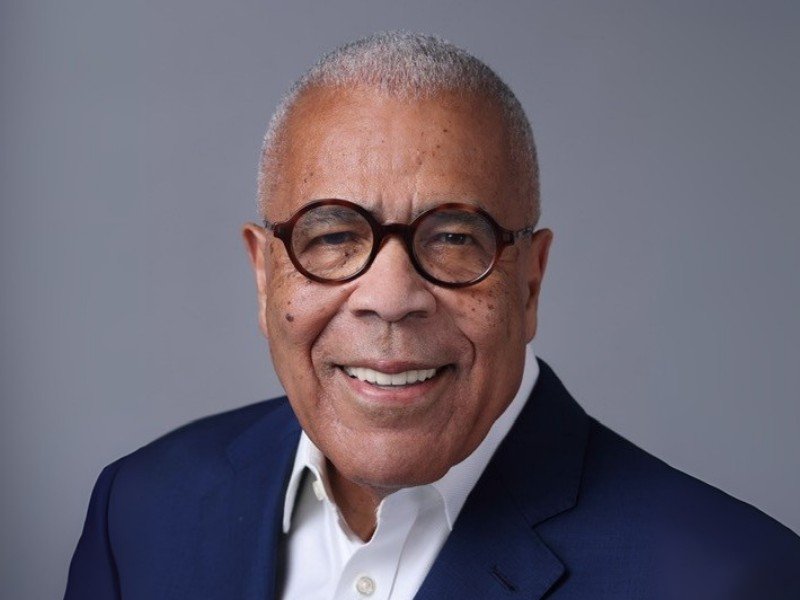As Thomas Williams prepares to retire after a decade serving as executive director of the $24B Employees’ Retirement System (ERS) of the State of Hawaii, he aims to leave behind a legacy of building investment and governance structures that will provide the fund with a strong foundation to carry it through current and future challenges.
Looking back on his tenure, he is proudest of his work with the ERS’ Board of Trustees to put industry-leading governance structures into practice, including moving delegation of investment decision-making and manager selection to internal staff.
He made it a priority to expand the investment team, hiring a new chief investment officer, traditional public and private markets portfolio managers, adding vital support functions like investment operations, accounting, and risk management to fully support investment decisions and achieve optimal long-term outcomes.
“This shift allowed for more timely, detailed, and effective decision-making and has had a profound influence on the fund’s investment performance and long-term trajectory,” said Williams.
Retooling the investment strategy
Soon after he started at the ERS, Williams, in collaboration with his board and investment team, moved to retool the ERS’ asset allocation strategy to enhance diversification while protecting against catastrophic drawdowns.
During the 2008 financial crisis, the pension fund had seen nearly 30% of its value erased, raising questions about its long-term viability. Since then, it has adopted a more risk-adverse focus. After joining the ERS in 2015, Williams implemented a crisis risk offset strategy — allocating a meaningful portion of its portfolio to diversifying alternatives and employing systematic strategies such as trend-following, relative value arbitrage, alternative risk premia, and other uncorrelated investments.
As of June 30, 2025, the fund’s global credit portfolio returned 8.7% against an 8.6% one-year benchmark. For three-, five-, and seven-year periods the portfolio returned 7.4%, 8.8%, and 7.2%, respectively, against its benchmarks (9.7%, 7.1%, and 6.5%, respectively). For the quarter to date (as of June 30, 2025), the portfolio returned 1.8% against its 1.6% benchmark.
The ERS’ private credit portfolio returned 8.8% against a one-year benchmark of 8.1%, as of June 30, 2025. Over three- and five-year periods, it returned 6.7% and 10.0%, respectively, against its benchmarks (8.3% and 7.2%, respectively). For the quarter to date (as of June 30), the portfolio surpassed its benchmark (1.8% vs 0.8%).
Over one-, three-, and five-year periods, the ERS’ public credit sleeve returned 8.5%, 9.0%, and 8.8%, respectively, against it benchmarks (9.6%, 10.8%, and 6.6%, respectively), as of June 30, 2025. Quarter to date, it returned 1.8% against a benchmark of 3.1%.
Like many institutional pension funds, the ERS experienced challenges after the market correction in 2022. Williams maintained that the strategy has continued to serve the fund well, despite that the equities market has rallied compared to other areas over the last few years, buoyed by accelerated growth in “Magnificent Seven” technology stocks and rapid transformation in the artificial intelligence space.
“We’re not chasing bull markets,” said Williams. “Our focus has been — and continues to be — long-term sustainability. That means accepting some underperformance during upswings in exchange for consistent compounded returns and meaningful downside protection when markets correct.”
According to materials by the fund’s consultant, Meketa, when considering risk-return profile, the ERS steadily outpaces its national peer set — outperforming its benchmark over one (5.3% vs 4.7%), three (4.8% vs 3.4%), five (8.5% vs 5.1%), and 10 (6.9 vs 5.1%) years.
As of June 30, 2025, the pension fund’s allocation breakdown stood at 70.7% to its Broad Growth portfolio, 24.2% to its diversifying strategies, and 5.1% to other strategies.
Register for our upcoming Southeast Institutional Forum
In light of what he views as a structurally more difficult global economic environment, Williams said the ERS is beginning to tilt its exposure toward areas with stronger forward-looking risk-return profiles. “We’re reallocating modestly toward private credit, infrastructure, and duration, as interest-rate environments have shifted and these assets now offer more compelling value.”
At the core of the ERS’ strategy is risk management, he added, noting while it is tempting to chase returns, it’s important to focus on longer-term horizons. “We’re playing a long game here. Diversification, especially through carefully chosen alternatives, isn’t just a theory — it’s our hedge against the next crippling crisis.”
A modern touch
Another pillar of Williams’ tenure has been the modernization of the ERS’ pension administration system. An upgrade launched six years ago, followed today by a more expansive initiative, aimed to transform operations, improve efficiency, service delivery, and operational resilience — which is especially critical in Hawaii, where he said the public sector faces severe staffing shortages.
“Across state agencies, vacancy rates have more recently hovered between 20% and 30% — especially in technical fields like accounting and IT,” Williams noted. “Unless we become more competitive with the private sector, public plans will continue losing talent. We close the gap in part by increasing productivity.”
The ERS’ revamped system will emphasize digital self-service for members and employers, streamlining routine transactions and freeing staff to focus on higher-value services. “It’s not just about reducing headcount — it’s about empowering the staff we do have to focus on what matters most: the quality of member experience.”
To fill capability gaps, ERS brought in top-tier consultants and project managers to lead and execute the transformation. “It’s like upgrading an operating system,” Williams explained. “You don’t do it once. You do it continuously.”
Additionally, Williams addressed a complex legal and operational issue that arose when a state-owned hospital was transitioned to private ownership. The state, aiming to reduce staffing costs and modernize operations, proposed a plan to offer early retirement or cash incentives to affected public employees — many of whom were enrolled in the ERS.
As a former lawyer, he realized the structure of the incentives could violate Internal Revenue Service’s rules, considering the proposal was written as a form of “cash or deferred compensation” that was prohibited according to federal tax laws. Williams took steps to work with key stakeholders, including communicating with all branches of state government, to repeal the legislation.
“We persevered in protecting the plan,” he noted, highlighting the importance of shared goals and effective communication among stakeholders.
Legislative engagement is a key component of Williams’ sustainability strategy. He also worked through legislative channels to change how the ERS handled benefit restoration following wrongful employee terminations. As a result of Williams’ proposal, state pension legislation now requires employers not only to remit back premiums but also to pay the actuarial present value of the reinstated benefits. The change meant instead of the fund receiving solely past due contributions and interest for a reinstated employee, the fund could now receive the full actuarial present value of the benefits being awarded — an amount that he said more accurately reflects the full long-term liability and addresses the unfunded liability risk that previously arose with undercompensated benefit restorations.
Pension health and strength
Another focus of Williams was in strengthening the ERS’ funding status. When he first took on his current role, the idea that the pension fund could reach 100% full funding was remote.
He disagreed, taking steps last year to have legislators lower the maximum amortization period from 30 years to 20. “We are currently well ahead of our 2017 actuarial forecast,” Williams shared.
One of the most important contributions an individual can make to improve the health of a public defined benefit pension plan is to shorten the period to full funding, he said. “That longer period might have been acceptable historically, but now actuarial standards have moved closer to shorter periods. Prolonged periods of negative amortization are no longer acceptable.
He noted the new amortization period will allow the pension fund to respond to deficiencies more quickly and will have a lasting impact on the plan’s strength and sustainability.
Before departing, he is also finalizing a reserve funding policy for the ERS that will guide contribution rates once the plan nears full funding. To Williams, even being 85% funded isn’t nearly enough for a public pension fund, so his proposal would maintain steady contributions up to full funding and some reduced level beyond, gradually reducing only after reserves have been built to buffer against future volatility.
“Once a pension plan nears or hits 100%, there’s a temptation to pull back on funding. But 100% funding is just a point in time — it can disappear overnight with a market drop. We need policies in place that mitigate economic reversal, especially during periods of potential steep or protracted market downturns.”
His parting message to his successor is to use adaptability, discipline, and foresight to meet the coming challenges of the next decade. “We’ve built a solid foundation, focusing on process, talent and tools, but the next era will require rethinking. If we respond properly, public pensions can remain a vital pillar of retirement security. But we can’t take that, or anything for that matter, for granted.”













